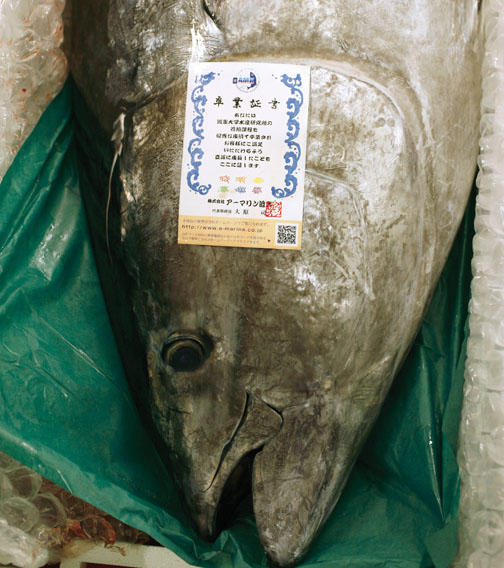Eating sushi can be a recipe for disaster. Especially if you don’t know what you’re doing.
I was in my freshman year at Princeton, and I’d joined a group of students from Japan for sushi at a restaurant near campus. I was excited to be there because I was a firm proponent of cross-cultural communication and a fan of authentic Japanese culture, particularly the food. In addition, there were several attractive women in the group.
I decided I should show off my knowledge of Japanese culinary terminology. I hadn’t actually studied Japanese, but while living abroad a year earlier, I’d picked up some words and phrases from my Japanese girlfriend and her friends.
They’d delighted in teaching me things an American wasn’t supposed to know. For example, one night we’d been eating sushi when I ate a large lump of wasabi. As the powerful green spice flared into my nose, I squinched up my eyes and gasped. They laughed and taught me a new word. When you eat too much wasabi, you close your eyes, suck in your breath, and shout, “Kiku!”
Now, at the restaurant in Princeton, I discreetly worked a lump of wasabi onto a piece of sushi. I put it in my mouth and felt the spice flare. Trying to recall my friends’ instructions exactly, I closed my eyes, gasped, and shouted, “Iku!”
When I opened my eyes, everyone was staring at me. Finally someone spoke up, in English. “You just said ... ” There was a pause. “You’re having an orgasm?”
I realized I’d confused two Japanese words, and the blood rushed to my face. “This sushi,” I muttered, “is really good.”
Women — of any nationality, as I would learn — tend to prefer men who don’t get prematurely excited, and the cross-cultural communication I’d had in mind clearly had not gone as planned.
After that, I was determined to speak Japanese properly. I struggled through most of Princeton’s Japanese-language classes, I attended Japanese summer school (twice), and I took the option for a fifth year abroad that was offered by Princeton’s East Asian studies program, allowing me to spend 10 months in Japan at one of the best Japanese-language training facilities in the world. I ended up staying in Japan for three years.
What I couldn’t have predicted was that a decade later, all this would take me back to the topic of sushi. Through sushi, I discovered that I still had much to learn about cross-cultural communication and cultural authenticity.
After Princeton I headed to graduate school in East Asian studies, but dropped out to become a commercial fisherman and then a journalist. I wrote a book based on my experiences fishing, then returned to my love of Japan and decided to pursue a deeper knowledge of sushi. I visited the famed Tsukiji Fish Market in Tokyo and hung out with sushi chefs, learning their secrets and studying Japanese writings on sushi that never had been published in English.
I was stunned to discover that most of what I’d believed I knew about authentic sushi was wrong. For starters, to eat enough wasabi that you’d have to shout “Kiku!” — let alone have an orgasm — might be funny, but it wasn’t something a sophisticated sushi eater ever was supposed to do.
Another myth I discovered concerned the bluefin tuna. Most sushi chefs will tell you that it is the most prized fish in the sushi tradition. A single specimen of this majestic fish can fetch tens of thousands of dollars at Tsukiji.
Until just a few decades ago, however, bluefin actually was considered by the Japanese to be a garbage fish, unsuitable for sushi — particularly the fatty cuts so popular today.
I learned that it was partly my own culture’s culinary habits that, following World War II, encouraged the Japanese to eat a fattier diet with more red meat. Without American influence, bluefin sushi might never have caught on in Japan. Moreover, it was the trade imbalance between the United States and Japan in the late 1970s and 1980s that led to the export of Atlantic bluefin to Japan, jump-starting a culinary trend that since has spread back to America. This has become a problem because today, fishermen are hunting down so many bluefin that populations of the fish are in serious danger.
Which leaves me in a strange position. I’ve had some success teaching Americans about sushi’s true traditions. Hollywood celebrities have been spotted studying my book on the topic, and my sushi expertise has landed me on Food Network TV’s hit show Iron Chef America. As the only “sushi concierge” in the United States, I’ve hosted educational sushi banquets and dinners for the National Press Club, the National Geographic Society, titans of Wall Street, and even Japanese diplomats. I run a dinner-class series at one of the best sushi restaurants in Manhattan. I’ve come a long way since “Iku!”
Yet the potential for miscommunication remains just as treacherous. As an American, I’m still an outsider to Japan. Few sushi chefs are receptive to hearing me offer suggestions about what is and isn’t authentic, and whether or not they should be serving bluefin — even when I deliver those suggestions in fluent Japanese, and even though my own culture contributed to the bluefin fad in the first place.
But sushi chefs have to be part of the solution, so regardless of the language I’m speaking, I’ve learned to negotiate a delicate balance between showing my respect for their skills and knowledge, and encouraging their customers to skip the bluefin and sample the fish and shellfish that are more authentic and often more sustainable. As it happens, in the opinion of many old-school sushi connoisseurs, these types of sushi are also more interesting to eat.













No responses yet